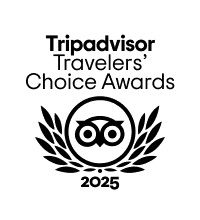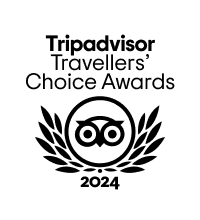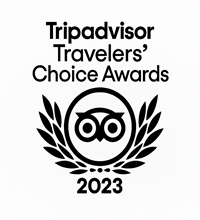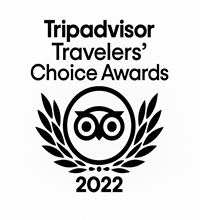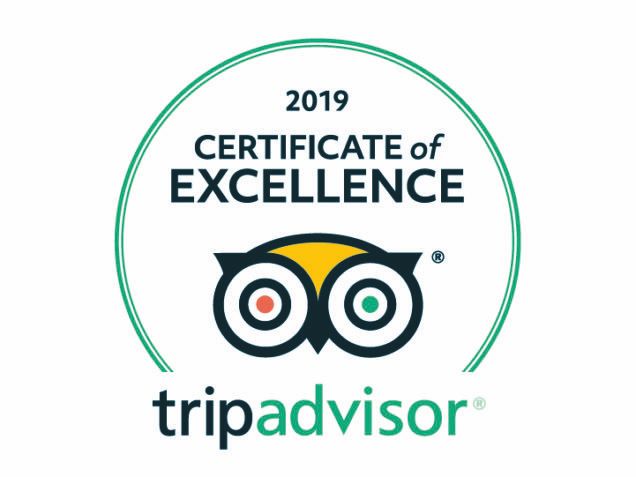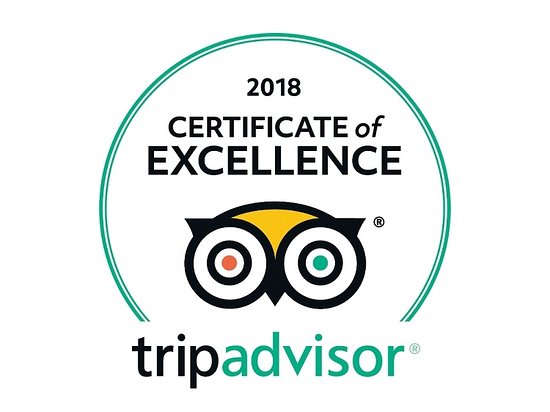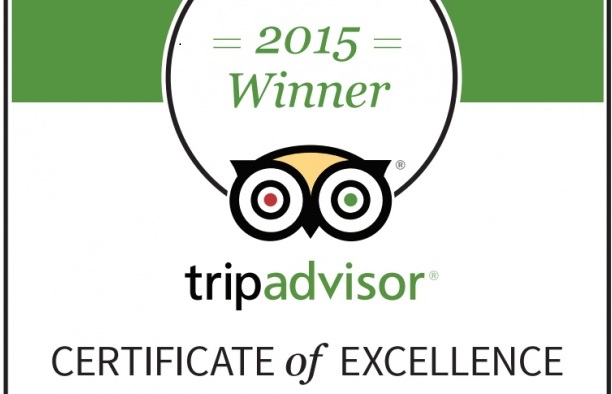IMPORTANT INFORMATION ABOUT ECUADOR
Ecuador is located in South America, bordered at north and East with Colombia and at south with Peru.
The country is on the Eastern Standard Time Zone (-5 GMT). The Galapagos Islands is -6 GMT
The official lamguage of the country is Spanish, and other thirteen recognized indigenous languages, including Kichwa
The electrical power is 110v 60hz. •
The currency in Ecuador and the Galapagos Islands is the US dollar (USD)
The official religion is Catholic.
The most important cities are Quito, Guayaquil, Cuenca with population around 3 million of habitants
The main city in Galapagos Islands is Puerto Ayora in Santa Cruz Island
The population of Ecuador is currently estimated about 18 million people
Ecuador is crossed by the Andes, the main chain of mountains of America.. And it's considered as the third country with most quantity of volcanoes along its territory.
Ecuador enjoys all the types and subtypes of climate that exist in the different latitudes.
The highest volcano in Ecuador is the Chimborazo Volcano 6,268 meters above sea level.
The most visited areas in Ecuador are the Galapagos National Park and the Cotopaxi National Park.
I Travel Preparations
Which custom restrictions are there?
Pre-Columbian objects, religious arti-cles, plants, food, animals or parts of it (skin, bones etc.) are not allowed to be taken out of the country.
Which medical issues are there?
You do not really need any vaccinations for visiting Ecuador.
Which recommends are there for taking along medicaments from your country?
We recommend you to take along the most important medicaments (against diarrhea, insects, inflammation, problems with the circulation, pain killers etc.). Please contact your doctor or a pharmacist in advance. But you do not have to worry as the medical circumstances in the big cities are also very good.
Which visa restrictions are there?
Please inform you at the Ecuadorian embassy or consulate in your country how the entry restrictions are for you country. As a tourist, you normally do not need a visa when you stay less than 90 days. Passport must be valid 6 months beyond intended stay.
Which travel insurances are recommended?
We recommend you to conclude a baggage and travel health insurance. You can book the insurances in a travel agency. About rates and conditions please inform you at your insurance company or in the internet.
Which currency does exist and how to prepare for the travel?
Depending on your currency and the US Dollar exchange rate, it can be recommended to exchange money in Ecuador, as the exchange rate can be much better here than in your country. You should take USD in cash with you and/or traveler checks.
The most common credit cards to pay with or to draw cash with all the credit card In the cities you will be able to use your credit card in many places but when paying cash you can save up to 10%.
What else to take along from home?
Because of the very various altitudes, Ecuador is a country in which you can find nearly EVERY climate. In general, it is recommendable to bag comfortable clothes and sportive shoes. As the solarisation is very intense, please do not forget a high quality sun protector, sun glasses, a hat and a sun blocker.
In the Andean Highlands, a warm jacket and rain protection could be helpful.
On Galapagos, at the coast and in the Amazon Rain Forest area, T-Shirts, shorts and long, easy shirts are optimal to be protected from mosquitoes. But also here, a rain jacket should be in your baggage, as there are often strong, but "warm" rain showers. For Amazonas Area and Galapagos we recommend robust sandals.
If you would like to watch animals on Galapagos or in the Amazonas, binoculars are important.
If adventure and climbing tours are planned, you will need special equipment. Please have a look at the descriptions in our programs as we often provide the necessary equipment.
We recommend normal films (100 ASA) for the highlands, the coast and the Galapagos Islands. For photography in the Jungle we recommend films with about 400 ASA. It is also recommended to use a UV-filter. It is not allowed to take pictures of military objects and police stations. Please be sensitive when taking pictures of people. Please ask them kindly and explain why and for what reason you would like to take a picture.
Cosmetic and hygiene articles should be taken along from your home country as they are very expensive in Ecuador. In the supermarkets, you will find nearly every article and "American / European Standard". In the suburbs and far away from the cities this could be more difficult.
How is the political situation in Ecuador?
Ecuador is a presidential republic. Although there are several problems in the country, the political situation is very stable. Further information you will find in the internet
How is the economical situation in Ecuador?
Thanks to the diversity of the agriculture in Ecuador with its different climate and cultivation areas, the country has a wide range of export possibilities. Bananas, flowers, shrimps, coffee, cacao and fruits are exported. But the most important source of income is the petroleum export. Furthermore, Tourism gets more and more important for the economy.
What is the climate like in Ecuador?
On account of Ecuador's varied regions and because of its location directly atop the equator, it is an excellent travel destination all year-round. Rather than rotating through four seasons, most of Ecuador experiences oscillating wet and dry periods.
The general weather trends for each region are as follows:
El Oriente (Amazon region)
… normally has a warm, humid and rainy climate. The average temperature varies from 23 to 26 oC (72 to 80 F). The drier season is generally November to February but varies by region.La Sierra (Andean Highlands)
… though on the equator, is generally cooler than most people would expect. The cli-mate in the Andes varies according to the altitude and the time of the year. In Quito the temperature ranges from 7 degrees C (55 F) at night, to 26 C (78 F) at noon, av-eraging 15 C (64 F).La Costa (Coastal lowlands)
… Climate is usually very warm with temperatures averaging 25 degrees C (76 F) to 31 C (90 F) during the year. The rainy season (December to May) is warm and very hu-mid. The dry season is less humid and cooler.The Galapagos Islands
... enjoy warm and dry weather from November to April, with an average temperature of 28º C. (85 F). From June to October it is the “garua” season. This is drizzle especially in the highlands of the Islands, the average temperature is about 23° C and the currents are rougher.
What about altitude?
Quito is located in an altitude of 2.850 (m.a.s.l). The highest mountains in Ecuador is the Chimborazo with 6.210 meters. Your body must get used to the altitude slowly and you should give him the time! If you tend to a high blood pressure or problems with circulation, it is recommendable to talk to you doctor in advance.
How about public transport?
The public busses and taxis, for example in Quito, are really cheap The destination of the busses, can be seen in the windscreen of the busses. The busses hold, when you wave with the hand in almost every corner. But to get off the bus you nearly only can do so at a bus stop. A one-way Bus ticket costs 35 Cents US, doesn't matter how far you go, as long as it is within the network. There are also lots of taxis within the cities. You can stop a taxi, by waving with the hand. During the day a taximeter should be switched on. In the evenings you should first discuss the price. Please only use registered taxis (yellow taxis with registration number and the name of the taxi company).
Which language knowledge is necessary?
The official language in Ecuador is Spanish. And many indigenous comunity of the Highlands also speaks Quichua langague. Some comunities of the jungle provinces have different languages of each tribe such as Huao, Kichwa and others.
How secure is the travel destination Ecuador?
Ecuador is a very safe destination.
What is important to know, concerning beggars?
In front of churches and famous sights, you will see old people or disabled persons, who also get something from locals. In the bigger cities you will see children, who ask for money or working in small businesses, like cleaning shoes. Finally it is on your own, if you would like to give something or not and how much. You can use the service of the children and so they have a bit of money. Generally you should have sensitiveness, when dealing with beggars, disabled persons and children.
Is it a problem to travel with children?
Generally it is just partly advisable to travel with children in Ecuador. The hygienic conditions, especially in rural areas, the climate, and the distances can be a problem for children. Furthermore children less than 7 years are not accepted in some Galapagos yachts and Jungle lodges.
What kind of power supply network is in Ecuador?
In Ecuador you can use the 110 V alternation current with American Plugs. You should be able to switch your electrical equipment to 110 V. You will receive an adapter for the special plugs in almost every electro-shop, or you bring something from your home-country.
What about the nightlife in Ecuador?
Like almost every city in the world, also the cities here, do have lots of restaurants, Bars and discothèques. So there will be something for everyone. Especially it is suggested to get to know the nightlife of Quito, which has a very special flair. The "Mariscal", which is the tourist and pleasure district within Quito is best for this.
We recommend the following places:
Plaza Foch
Cafe Sutra: cosy Cafe for having a chat, eating or drinking Cocktails. (Juan Leon Mera y Calama)
Cafecito: comfortable Cafe (Cordero y Reina Victoria)
Seseribó: Salsa-Discothèque (Veintimilla y 12 de Octubre)
What Indigenous markets do I have to visit?
In the highlands, there are almost every day Indio markets, whereby Otavalo offers the best goods. However also all the others are good to see.
Monday
Animal market in Ambato (the biggest within Ecuador)
Tuesday:
Latacunga
Wednesday:
Pujilí (Comestibles and other goods)
Thursday:
Saquisilí (Comestibles, art-goods, typical things)
Guamote
Saturday:
Otavalo (arts and crafts, comestibles, typical goods, animals)
Riobamba (typical goods, arts and crafts)
Latacunga (typical goods and handpags)
Sunday:
Pujilí, Machachi, Gualaceo (comestibles and other goods)
Sangolqui (arts and crafts)
Cotacachi (leather goods)
How many taxes do you have in Ecuador?
The VAT tax in Ecuador is 15 % taxes added on goods and services. The tax is not always signposted in the price, but will be added at the final price. In restaurants and hotels, there is an additional service charge of 10% tax added to the price. In most cases there will also be the net price signposted. The taxes will then be added at the final invoice. In all Restaurants, shops and Hotels you will see if it is the net price or brut price.
What kind of accommodation is available during tours?
Hotels:
On the mainland the standard of hotels in Ecuador is very good. Generally speaking, you have the choice between middle class (average requirements) or the first class (higher requirements) hotels.
Hosterias/Haciendas:
Those are accommodations in former farm houses, which have typical Ecuadorian style. They are mostly in huge garden areas, which are really typical for Ecuador. The rooms are normally really big and individually designed. These accommodations are very comfortable, however normally not really modern, what gives them a great atmosphere. The prices are stated in USD, for a double room. If you are travelling alone you have to add a single supplement. If not specially mentioned, the price is for standard rooms.
III Galapagos
Rules when visit Galapagos Islands
The beauty of nature of Galapagos can only be preserved if the visitors follow these 12 rules, which have been drawn up by the administration of the National Park.
1. Do not touch any animals
2. Do not feed the animals - it will disturb them in their natural comportment
3. Do not scare away nesting birds
4. Do not take away animals, plants or parts of them as a souvenir
5. Do not buy souvenirs consisting in parts of animals or plants
6. Do not bring any animals or plants from the mainland - otherwise the Islands' ecosystem could be destroyed
7. Do not bring any food to the Islands
8. Throwing away litter is not allowed
9. Do not write or carve your name in trees or rocks
10. Follow the instructions of your guide
11. You are not allowed to leave the marked trails
12. Point out the rules of the National Park to inattentive visitors
How to reach the islands?
The flights depart from Quito (stopover in Guayaquil) or Guayaquil. There are two airports in Galapagos Islands, San Cristobal or Baltra.
The flight from Quito to Guayaquil takes 45 minutes. And from Guayaquil to the Galapagos Islands takes one hour and a half hours.
Are there luggage restrictions on the airplanes?
For the flights to Galapagos islands Allow you one storage bag of 23 kilos and one carry-on bag of 10 kilos.
Which additional costs are there when traveling to Galapagos?
Not included in the tours are:
National park entrance fee (200 USD per person - payable in cash at the airport in Galápagos)
Drinks (except water, tea and coffee on cruises)
Tips
Travel insurance
Ingala Control card USD 20.- per person
Flight from Ecuador to Galápagos and back
Is it allowed to smoke on board or on the islands?
It is not allowed to smoke in the cabins or on the islands. However, some of the boats offer certain smoking areas.
Is there a possibility to change money on the islands?
There are now few banks in the islands where you can get omeny from the ATM.
What is the electric current on board?
110V, 60 Hz, sometimes ships offer 220V.
Do you have to bring a certain physical condition?
Some of the trails on the islands are quite rough so passengers should bring a good physical condition
Are there medical services available?
There is only first aid available on Galápagos. All vessels have radio contact with the mainland in case of emergency. Some of the bigger ships may have their own doctor aboard. But there is no hospital so in case of an illness you have to return to the mainland.
Is sea sickness common?
Most people are not affected but there may occure rough sea or the constant motion of the ship might bother you. So if you are susceptible to seasickness you should take some medication, just in case.
Are there special meals for people with dietary requests?
Sure, the cruises can handle any kind of diet or food restriction for making your trip unforgetable in any detail
What are wet landings?
A small boat called "panga" brings you from the yacht to the shore. Some landings are "dry", that means you can step directly on volcanic rock. Wet landings mean that you have to wade ashore in shallow water (can be from your ankle up to your knee). The water may splash so you should pack your camera into a plastic bag.
CLIMATE IN THE GALAPAGOS ISLANDS
The climate in the Galapagos Island is the result of a unique combination of ocean currents, winds and geographic landforms. Diverse microclimates may exist within the same island and certainly, each island may experience quite different weather conditions.There are only 2 seasons in the Galapagos Islands. The first one is known as the Dry Season and the second one is the Warm Season.
Dry Season:
The Garua season goes From June to December the dry season brings a more humid and hotter climate. The temperature varies from 78ºF to 84ºF during the day and form 70ºF to 76ºF at night. During the day there is a little precipitation which lasts in between 1 and 2 hours. The Humbolt current makes the sea temperature cooler the currents calmer and the winds lighter. Cloudy days and a small drizzle. This actually makes the climate fresher so dont expect all sunny days but a cooler weather for the hiking , no need of A/C or fan during the night and almost no mosquitoes. The colder wáter brings more plancton and more wildlife, this is the best time of the year to spot whales during the boat transports.
Warm Season:
From December to May the warm season brings cloudier skies and a more tropical weather. The temperature varies from 68F TO 76F. The current of El Niño makes the sea temperature warmer so it is perfect to snorkel and swim. Precipitation is common during this season. Days can be really hot (more than 30 degrees) and the wáter is warm due to Panama current entering in the islands marine reserve. No need for a wetsuit , sunny days, if you need to warm up from the Winter back home, this is the good season! Expect heavy tropical rains that can last 1 to 3 hours ( really, we have not that much days with rain all day long, it can happen but not on all islands at the same time). Due to the rains all the islands are greener. In between these two seasons would be the transition time where you can have a bit of both seasons!
TIPS: if you do not depend on kids holidays, try to travel in low season: September-October, February, or May-June: you have less people on the visitor sites and still enjoy the same fauna/flora as the rest of the year
PACKING LIST FOR GALAPAGOS
Wide-brimmed sun hat •
Small backpack •
Shorts (2) •
Short and light shirts (4) •
Light pants (2) •
Sweater (1) •
Windbreaker (2) •
Jacket or rain poncho (2) •
Good athletic walking shoes (1) •
Beach sandals (1 pair) •
Sunglasses •
Swimsuit •
Camera and camcorder •
Binoculars •
Snorkel equipment and wet suit •
Sunscreen •
Mosquito repellent
NOTE: You can buy all these items in Ecuador. *
PACKING LIST FOR JUNGLE TOURS
The flights to Coca city allow you a checked bag of 20 kilos and one carry-on bag of 10 kilos per person:
Original passport and coloured copy.
Cash for bar services, tips or souvenirs (Visa and
MasterCard are accepted at
the lodge).
Personal medication to last for the duration of your trip.
Sunhat + Sunblock.
Sunglasses.
Walking shoes/sneakers.
Waterproof sandals such as tevas or kenes / ip ops.
Socks: we recommend tall socks that don’t slip easily inside rubber Boots.
Two
pairs per day are ideal.
Light-weight, earth- or coloured, long-sleeved shirts and t-shirts.
Light-weight quick-dry hiking pants / Goretex jacket.
Insect repellent (natural, not chemical like DEET).
Box lunch bag
Flashlight (or headlamp) + extra batteries.
Personal rst aid kit.
Camera.
Dry bags.
Rubber Boots supplied at the lodge. Available sizes US 5 to US 12.
Binoculars (optional).
If you have any further questions, do not hesitate to contact us.
